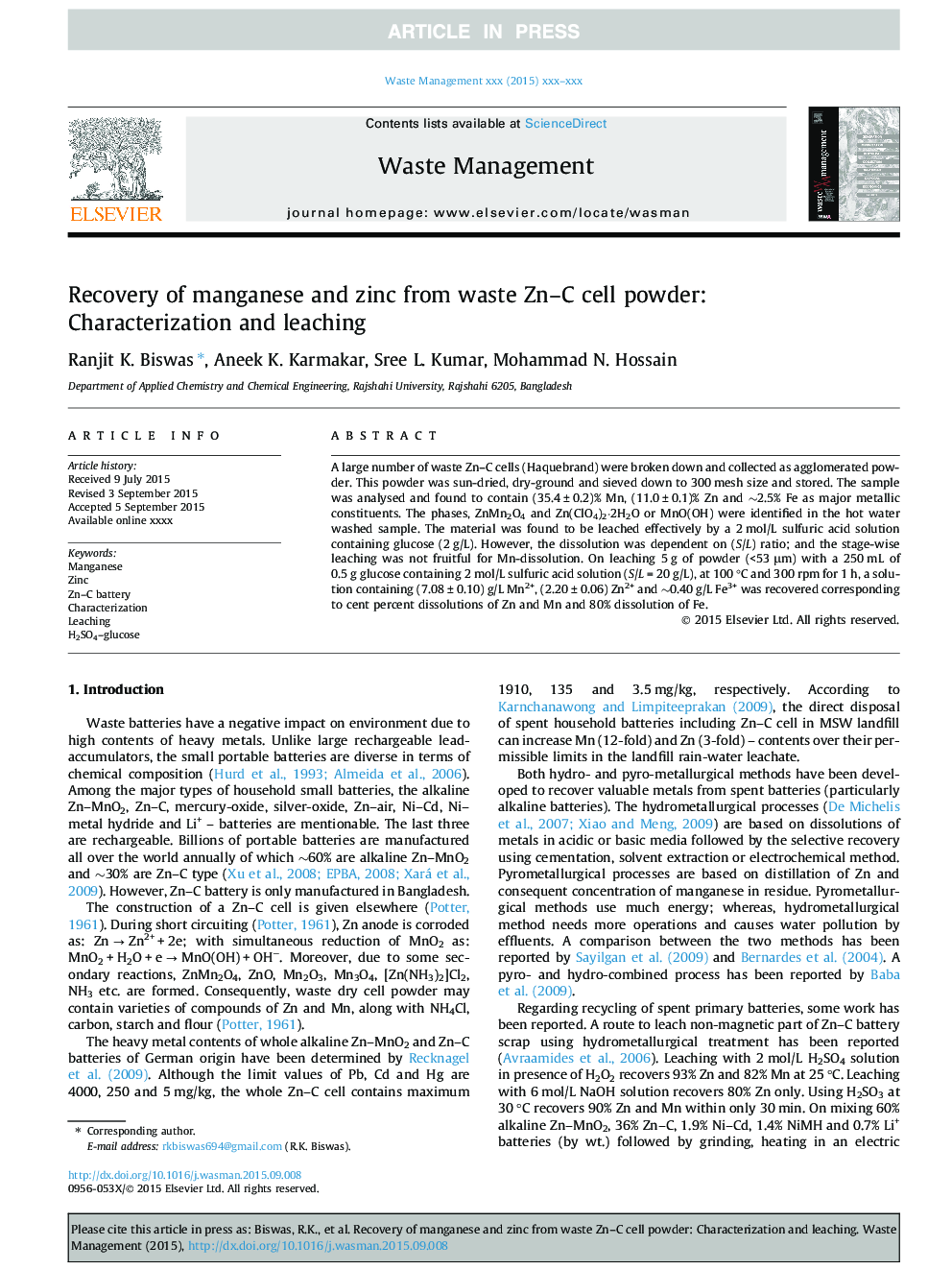| Article ID | Journal | Published Year | Pages | File Type |
|---|---|---|---|---|
| 6354544 | Waste Management | 2015 | 7 Pages |
Abstract
A large number of waste Zn-C cells (Haquebrand) were broken down and collected as agglomerated powder. This powder was sun-dried, dry-ground and sieved down to 300 mesh size and stored. The sample was analysed and found to contain (35.4 ± 0.2)% Mn, (11.0 ± 0.1)% Zn and â¼2.5% Fe as major metallic constituents. The phases, ZnMn2O4 and Zn(ClO4)2·2H2O or MnO(OH) were identified in the hot water washed sample. The material was found to be leached effectively by a 2 mol/L sulfuric acid solution containing glucose (2 g/L). However, the dissolution was dependent on (S/L) ratio; and the stage-wise leaching was not fruitful for Mn-dissolution. On leaching 5 g of powder (<53 μm) with a 250 mL of 0.5 g glucose containing 2 mol/L sulfuric acid solution (S/L = 20 g/L), at 100 °C and 300 rpm for 1 h, a solution containing (7.08 ± 0.10) g/L Mn2+, (2.20 ± 0.06) Zn2+ and â¼0.40 g/L Fe3+ was recovered corresponding to cent percent dissolutions of Zn and Mn and 80% dissolution of Fe.
Related Topics
Physical Sciences and Engineering
Earth and Planetary Sciences
Geotechnical Engineering and Engineering Geology
Authors
Ranjit K. Biswas, Aneek K. Karmakar, Sree L. Kumar, Mohammad N. Hossain,
